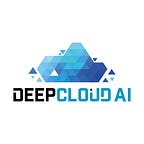DeepCloud AI Hackathon: Meet the Winners!
DeepCloud AI’s First Hackathon
A couple months ago in beautiful Santa Clara, California, DeepCloud AI hosted its first hackathon at the Global AI Conference. The hackathon attracted more than 70 people on Devpost, with participants from all over the world as well as local developers in the Silicon Valley area.
The hackathon’s main goal was to get the creative juices of IoT and blockchain developers flowing, and see what kind of fascinating ideas that they could develop and implement on DeepCloud AI’s decentralized edge / cloud computing network.
Day 1: Decentralized AI Presentation & Team Preparations
On the first day DeepCloud AI CTO, Geeta Chauhan, spoke at the Global AI Conference on Decentralized Artificial Intelligence, similar to the one given in November at the IoT Expo:
Shortly after, hackathon participants gathered to learn more about the DeepCloud AI decentralized cloud, the rules of the hackathon, and was also given a presentation by Intel on their Intel® Software Guard Extensions, a key component which helps secure the DeepCloud network.
As teams were finalized (both online and those in attendance in Santa Clara) the ideation phase began and the teams began to get familiar with the tech stack required to launch their ideas on the network.
Day 2: Concept Development
On the second day the teams had the opportunity to share their ideas, and dive straight in to work on their projects. With only a few days to complete their ambitious ideas utilizing new technology and tech stacks, the race against time was on!
Developer Interviews from Santa Clara, CA!
Without further ado, DeepCloud AI is proud to introduce the winners of our first hackathon!
Best Overall App, Best Video, and Best Blockchain
Security Chain by Jingwen Xu and Priyanka Subramanyam
The Security Chain team realized the need for a decentralized database of criminals and high-risk individuals. They pointed out that in just the United States alone, over one million passengers cross the border to the north and the south. The problem with having such large borders and different law enforcement and immigration agencies is the possibility of segmented, inconsistent, or even maliciously altered data. Instead of having each agency use their own data centers and databases, whether it be in America, Europe, or Asia, a distributed network of decentralized nodes can be utilized to share criminal records across borders and law enforcement agencies across the world. Meet Security Chain, the first dApp for a decentralized database accessible by any agency to check a person’s background for criminal activity.
Best AI@Edge App
MF Lock by Govind Tathachari
In a world where identity and data theft is so rampant, sometimes it feels as if nothing is truly secure. Innovations in two-factor authentication systems are beginning to grow in popularity and is almost a necessity in highly sensitive environments such as financial systems and even your Gooogle account. MFLock takes it to the next level, utilizing Intel’s Neural Computing stick to create a sophisticated AI@Edge multi-factor authentication system that uses facial recognition as its extra layer of security. Applications like this would be great for authenticating access to physical locations, such as a restricted zone of land or a military base. However, latency and delay can become an issue for areas where there is no reliable, closeby center to process the data. DeepCloud’s decentralized fabric aims to fix that problem by allowing anyone to become resource providers in any part of the world, allowing this kind of edge computing to be effective with IoT devices even in remote areas.
MFLock utilizes Flask, a light but powerful Python framework, for the first step of authentication — logging in with a pin. The actual facial authentication happens on-premise with a cleverly built camera module on an Intel NCS enhanced Raspberry Pi 3. The neural computing stick would then use machine learning to match faces with authenticated users. The combination of a powerful on-premise IoT device and the use of DeepCloud AI’s edge fabric makes this project truly stand out.
Best IoT App
Environment Sensing / Salmon Counter by Sudhir Kshirsagar and Steve Mylroie
IoT is expected to play a huge role in environmental protection and monitoring in the near future, giving inspiration to Sudhir and Steve to leverage technology for sustainability. With low latency networks, such as DeepCloud AI’s decentralized cloud, and increasingly powerful devices to process data, projects such as this is already possible. This project utilizes a camera on a Raspberry Pi board which then processes the incoming video feed through Intel’s powerful NCS (neural computing stick) to quickly observe the environment, such as counting the number of salmon swimming by. However, the possibilities are endless and exciting. The next decade will radically change the way we collect, analyze, and distribute data, and Sudhir and Steve certainly seem to understand the potential impacts it can make.
Notable Projects
Runner-up Intel SGX Application: SecureGeo
Runner-up Blockchain Application: Dairy Products Supply Chain
Runner-up Blockchain Application: Proof of Software Checksum
Runner-up AI@Edge Application: Gesture Detection for blind
